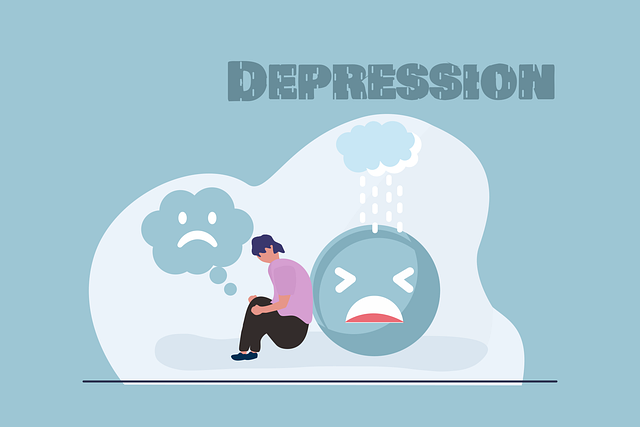Children's mental wellness is crucial for healthy development, and early intervention through tailored therapy, including American Sign Language (ASL), breaks down barriers and reduces stigma. ASL enhances nonverbal communication, empowering kids to express emotions and improving treatment adherence. Techniques focused on emotional intelligence (EI) teach children to manage their emotions effectively. Collaborative efforts at home and school promote mental wellness, with strategies like daily check-ins and mindfulness exercises. Public awareness campaigns and educational institutions integrating emotional well-being promotion further support children's mental health.
Mental wellness promotion is a vital aspect of fostering healthy, happy, and resilient children. This comprehensive guide delves into various strategies and approaches aimed at enhancing emotional well-being in young minds. From early intervention techniques to the unique benefits of American Sign Language (ASL) therapy, we explore effective ways to support children’s mental health. Additionally, discover practical tips for parents and educators to create supportive environments, ensuring every child has access to resources for their therapeutic journey.
- Understanding Mental Wellness in Children: Early Intervention Strategies
- The Role of American Sign Language (ASL) in Promoting Emotional Well-being
- Therapeutic Approaches for Children: A Comprehensive Overview
- Supporting Mental Health at Home and School: Practical Tips and Resources
Understanding Mental Wellness in Children: Early Intervention Strategies

Understanding mental wellness in children is paramount to fostering healthy development. Early identification and intervention are key strategies in promoting positive mental health for young individuals. Mental illness, often misunderstood and stigmatized, can manifest in various ways, from anxiety and depression to more severe disorders. By introducing therapy tailored for children, including innovative approaches like American Sign Language (ASL) communication, professionals can break down barriers and initiate essential conversations.
Early intervention through therapy not only aids in managing existing mental health issues but also empowers children with coping mechanisms and self-care routine development. This proactive approach contributes to stigma reduction efforts, ensuring a supportive environment where children feel comfortable discussing their emotions and seeking help when needed. Moreover, mental health policy analysis and advocacy play a crucial role in shaping accessible services and resources for children’s mental wellness.
The Role of American Sign Language (ASL) in Promoting Emotional Well-being

American Sign Language (ASL) is emerging as a powerful tool in promoting emotional well-being, especially for children who may struggle with traditional therapy methods. By utilizing ASL, therapists can create a more inclusive and accessible environment for young individuals to express their feelings and communicate about their experiences. This alternative approach can be particularly beneficial for those with hearing impairments or those who find it challenging to articulate emotions verbally.
Incorporating ASL into therapy sessions offers unique communication strategies that facilitate emotional healing processes. It allows children to non-verbally convey their thoughts, which can be especially useful in trauma support services. Through sign language, they can feel more empowered and supported, fostering a sense of safety and trust during the therapeutic journey. This method encourages active participation, making therapy an engaging experience and potentially increasing adherence to treatment plans.
Therapeutic Approaches for Children: A Comprehensive Overview

In promoting mental wellness among children, therapeutic approaches play a pivotal role in fostering resilience and healthy development. One innovative method gaining traction is the incorporation of American Sign Language (ASL) in therapy sessions. This visual-spatial language offers a unique way for children to express themselves, especially those who are nonverbal or have difficulty communicating verbally. ASL therapy enhances self-expression, improves social interactions, and provides an alternative means of stress reduction methods tailored to each child’s needs.
Beyond ASL, various therapeutic techniques focus on emotional intelligence (EI) development. These approaches teach children to recognize and manage their emotions effectively. By integrating EI into self-care practices, kids gain valuable skills for coping with daily challenges. Techniques such as mindfulness exercises, cognitive-behavioral therapy (CBT), and play therapy are widely used to promote mental wellness, enhance emotional awareness, and encourage positive behavioral changes in children.
Supporting Mental Health at Home and School: Practical Tips and Resources

Promoting mental wellness at home and school is a collaborative effort that can significantly impact a child’s overall well-being. Parents and educators play a crucial role in fostering an environment that encourages open conversations about emotions, provides support for stress management, and normalizes seeking help when needed. Incorporating practices like daily check-ins, mindfulness exercises, or even engaging in activities together can foster emotional intelligence.
For families, therapy can be a valuable tool, offering specialized support for children’s mental health through American Sign Language (ASL) interpretation services, ensuring accessibility for deaf and hard-of-hearing individuals. Public Awareness Campaigns and Mental Wellness Podcast Series Production can also contribute to enhancing understanding and breaking down stigma. Educational institutions should integrate emotional well-being promotion techniques into their curricula, teaching students coping strategies and resilience from an early age.
Promoting mental wellness in children is a multifaceted endeavor, requiring early intervention strategies, innovative tools like American Sign Language (ASL), and a variety of therapeutic approaches. By implementing practical tips at home and in schools, we can foster healthier minds and better equip children to navigate life’s challenges. Integrating ASL as a communication bridge enhances emotional well-being, especially for those who find verbal expression difficult. Ultimately, a comprehensive approach that includes therapy tailored to children, along with supportive environments, is crucial for nurturing mental health from an early age.














